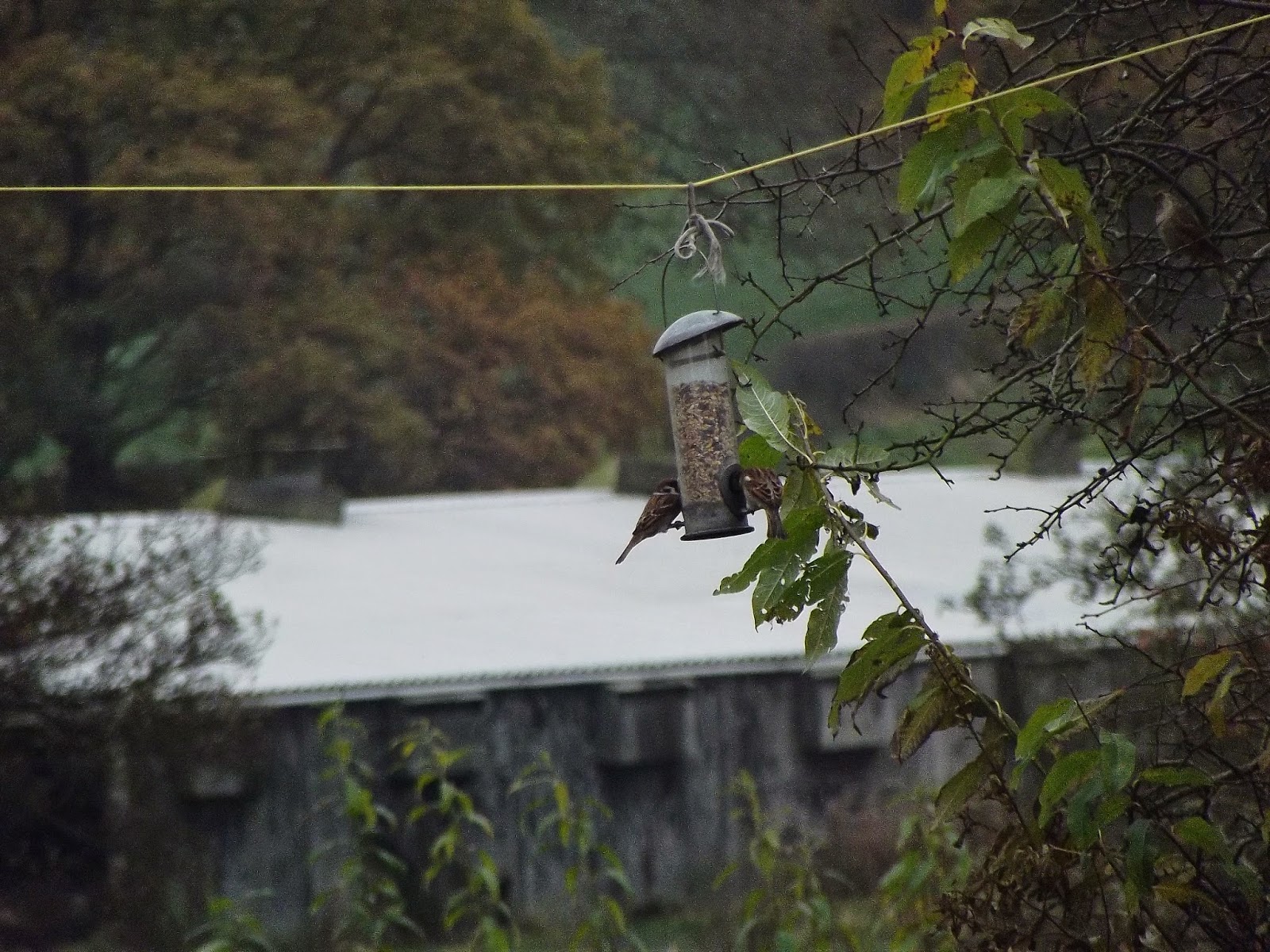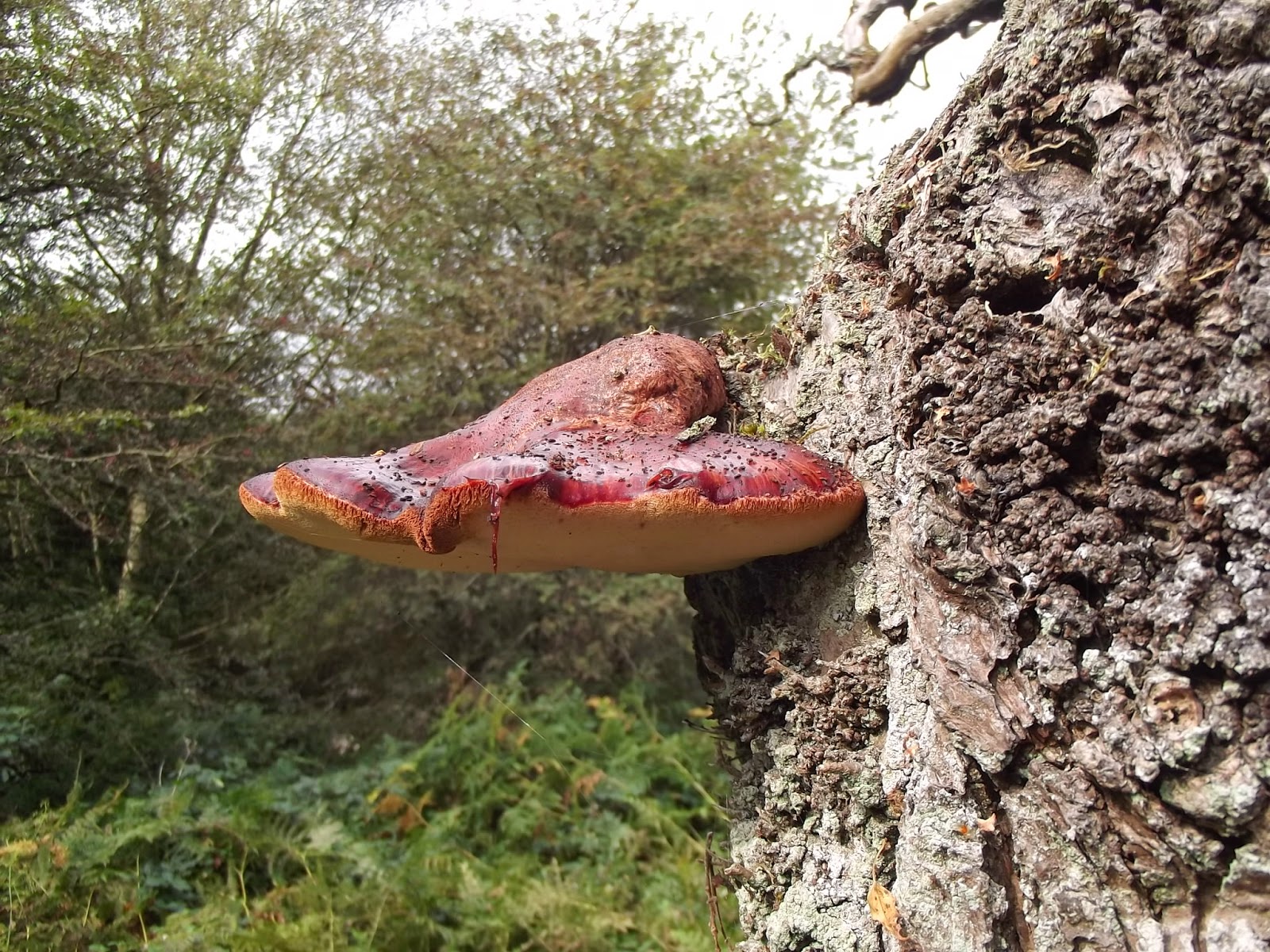Yesterday was something of a record for my garden - we had three adult
Tree Sparrows feeding from our garden feeders. Here is a photo of two of them.
I've had three Tree Sparrows in the garden before, but in this case it was in the spring and some of them were fledgelings being fed by a parent, of which I'd never counted more than two (see pic. below). So seeing three at this time of year is good news, as it means there must be at least three adults.
We also have a flock (approx. 30) of House Sparrows that feed and breed in and around our house and garden. Both species of sparrow often feed alongside each other at the garden feeders, sometimes on the ground and sometimes perched on the feeder itself. Unfortunately there are also a lot of Domestic Cats living in the vicinity, and these take their toll of various garden birds, including sparrows. For example a few weeks ago, on two consecutive days, I saw the same cat with four apparently recently fledged sparrows. For all I know more birds were killed. I do not know whether these were House or Tree Sparrows or a mix of both. Whichever they were it was not a welcome sight.
Both Tree and House Sparrows are Red Species of Conservation Concern and so earlier on this year, on request of the RSPB, I pledged to provide a home for sparrows. In order to fulfill my pledge I chose to have two Swegler nest boxes for my birthday present in February and since this weekend we have made another communal nest box out of scrap wood. The new Swegler boxes were not used this year but I hope that, now they have become a regular feature of my garden environment, they will be used next breeding season.
 |
| Home-made communal nest box. |
Swegler nest box.
House Sparrow and Tree Sparrow on garden feeders.
Of course there may be more than three adult Tree Sparrows, and it may be that though we only ever see two or three at a time, these are different birds. However, Tree sparrows are a very communal species and much larger numbers of individuals feeding will be seen feeding together when flocks are larger. So i suspect there are only one or two pairs living around my home and garden. So an increase of observations of one extra Tree Sparrow on my garden feeders (thats a 50% increase in population size over 10 years) may be close to the actual increase in the Tree Sparrow population, and not just a chance observation. Tree Sparrows are a highly sedentary species, which means they don't move far. Thjis could of course mean that "my" population could become inbred. However I have seen Tree Sparrows in another part of Endon - near the footpath between the John Emery Land and Endon Riding School. I think they had been feeding on a garden feeder which was in a garden that backs on to the path. If this area holds another small population, there is a chance for the two groups to mix, and therfore reduce the chances of inbreeding. Here is the report of the study of juvenile dispersal of Tree Sparrows that was conducted in 1960-61.
Nationally, Tree Sparrow and House Sparrows numbers may be on the increase (see links below). Perhaps the Endon population is also part of this trend. I do hope so.
http://www.rspb.org.uk/discoverandenjoynature/discoverandlearn/birdguide/name/t/treesparrow/

%2Band%2Bor%2Bhouseflies%2B(Musciae)%2Bon%2Bdog%2Bfaeces.JPG)






















.JPG)

%2Bfungi%2Bgrowing%2Bon%2Btwig.JPG)





















